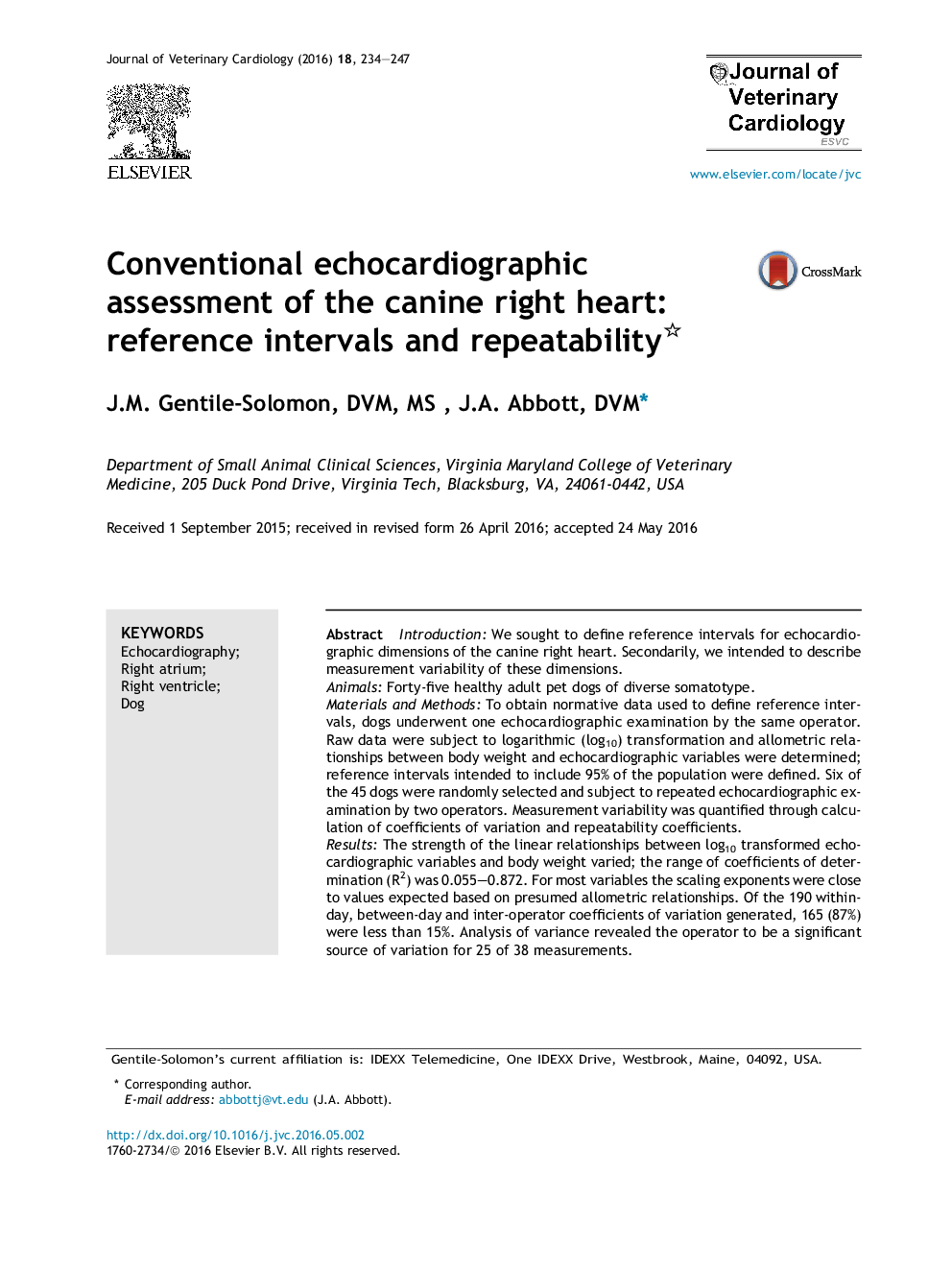| Article ID | Journal | Published Year | Pages | File Type |
|---|---|---|---|---|
| 2399978 | Journal of Veterinary Cardiology | 2016 | 14 Pages |
IntroductionWe sought to define reference intervals for echocardiographic dimensions of the canine right heart. Secondarily, we intended to describe measurement variability of these dimensions.AnimalsForty-five healthy adult pet dogs of diverse somatotype.Materials and MethodsTo obtain normative data used to define reference intervals, dogs underwent one echocardiographic examination by the same operator. Raw data were subject to logarithmic (log10) transformation and allometric relationships between body weight and echocardiographic variables were determined; reference intervals intended to include 95% of the population were defined. Six of the 45 dogs were randomly selected and subject to repeated echocardiographic examination by two operators. Measurement variability was quantified through calculation of coefficients of variation and repeatability coefficients.ResultsThe strength of the linear relationships between log10 transformed echocardiographic variables and body weight varied; the range of coefficients of determination (R2) was 0.055–0.872. For most variables the scaling exponents were close to values expected based on presumed allometric relationships. Of the 190 within-day, between-day and inter-operator coefficients of variation generated, 165 (87%) were less than 15%. Analysis of variance revealed the operator to be a significant source of variation for 25 of 38 measurements.ConclusionsReference intervals for echocardiographic dimensions and indices of right heart function are proposed. Repeatability of selected linear dimensions and areas obtained from two-dimensional echocardiography likely is sufficient for longitudinal clinical evaluations.
